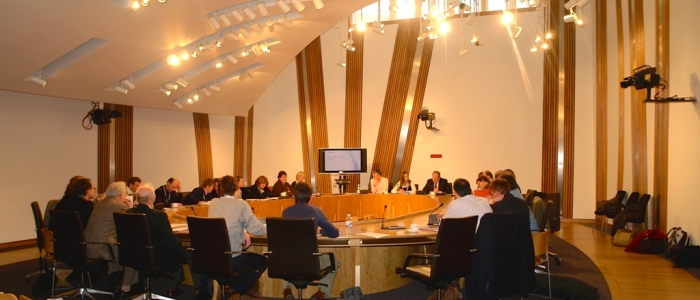
APT members meeting at the Scottish Parliament Building
Setting up and running a building preservation trust

The principal aim of a building preservation trust (BPT) is to rescue historic buildings that would otherwise be lost. It creates a vehicle for local communities to regenerate threatened historic environments. The BPT will inject new life into a derelict or abandoned building by acquiring and restoring it and then either reselling or continuing to manage it as a heritage asset. BPTs can act as pressure groups and advisers to find other solutions for buildings at risk, and many undertake heritage-related activities such as running Heritage Open Days and award schemes, or delivering education and training programmes.
There are over 200 BPTs in the UK. Some cover individual towns, cities, or whole counties; others specialise in particular types of building and a few cover the whole of the UK. Some have been set up to save a single building and others operate as multi-project Trusts. Please see www.ukapt.org.uk to find Trusts located near you or to discover the amazing range of current and completed projects.
Setting up a Trust
The BPT is usually constituted both as a Registered Charity and a Company Limited by Guarantee. A Standard Governing Document for building preservation trusts, which is recognised by the Charity Commission in England & Wales, the Office of the Scottish Charity Regulator in Scotland and the Inland Revenue in Northern Ireland can be found at www.ahfund.org.uk/advice.html.
The BPT model has a number of advantages:
- it establishes a recognised form of charity, so it is easier to set up than an ad hoc charity
- it provides all the powers needed to rescue historic buildings
- it focuses effort on historic building regeneration through the undertaking of projects
- it forms the basis for membership of the Association of Preservation Trusts
- it reduces risk to their trustees by establishing the organisation as a limited company,
- it establishes a respected organisation that is recognised by funders such as the Heritage Lottery Fund and the Architectural Heritage Fund, which was established to provide low interest loans to Building Preservation Trusts.
Running a Trust
A Trust needs to be aspirational and passionate about heritage, but at the same time it should also never underestimate the challenge of taking on a building and managing complex funding packages and partnerships.
Successful Trusts usually exhibit three basic principles:
Good Governance: this means having a robust forward strategy with a clearly identified mission and goals, observing all constitutional principles and objects, managing risk and having the right mix of trustees (a combination of legal, financial and building conservation expertise is essential, with fundraising, social enterprise, digital media and heritage education being other useful skillsets).
Inclusivity: constantly striving to attract ‘new blood’ and new audiences by celebrating any achievements, using media and membership schemes creatively to embrace new supporters, and refreshing the trustee profile on a regular basis.
Sustainability: project funding is difficult enough to obtain, but ensuring the long-term future of the organisation is a further critical challenge; this means thinking carefully about how best to use any assets you might obtain, and to have the resources in place to meet the long-term core costs of running the organisation.
Setting up and running a Trust may sound a daunting task, but there is a lot of support, information and advice to help you. The best way to find out more is to attend one of the regional events run by the UK Association of Building Preservation Trusts. For more details, visit www.ukapt.org.uk/categories/regional-apts.html. Or contact UKAPT or the AHF to talk through your ideas and plans.